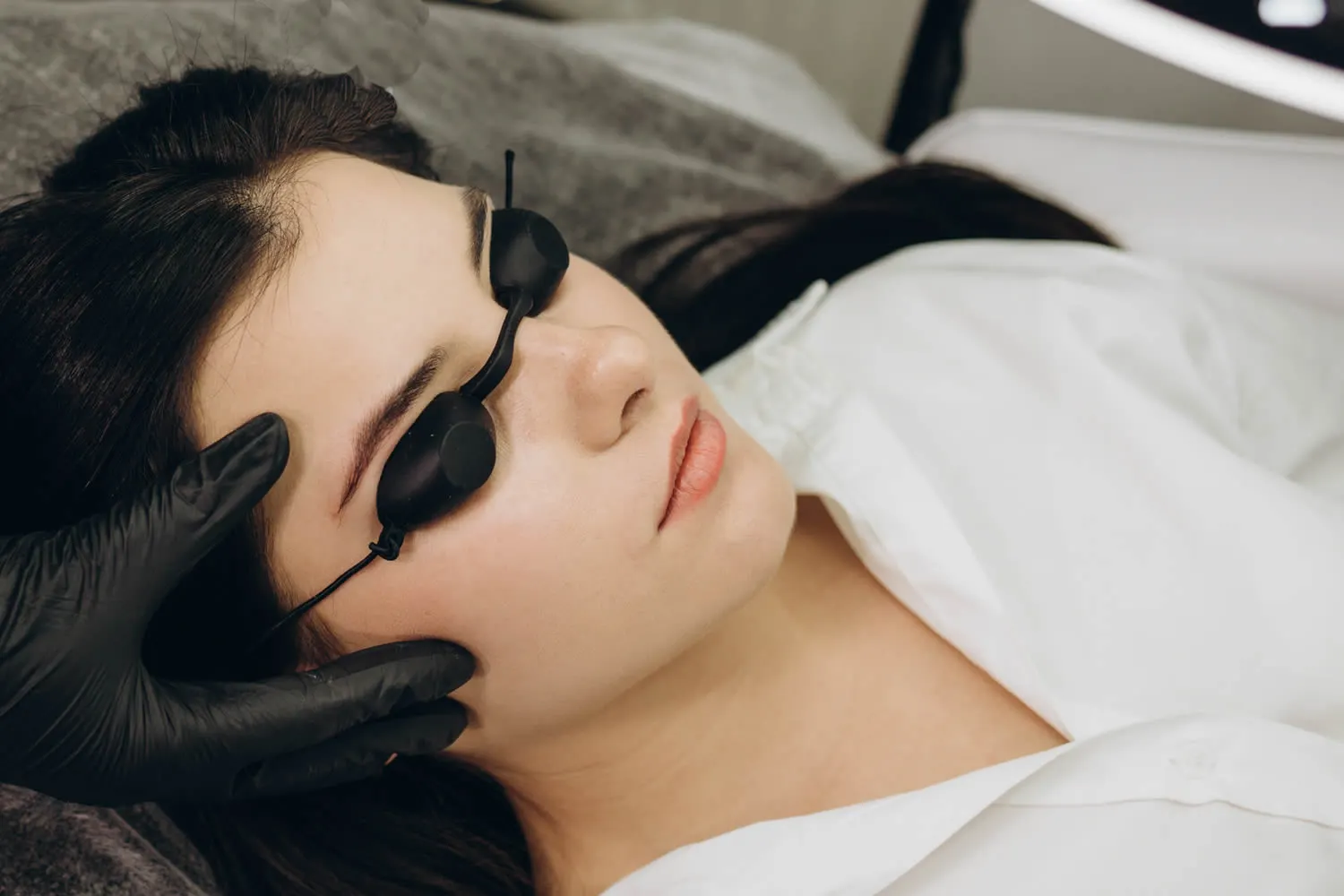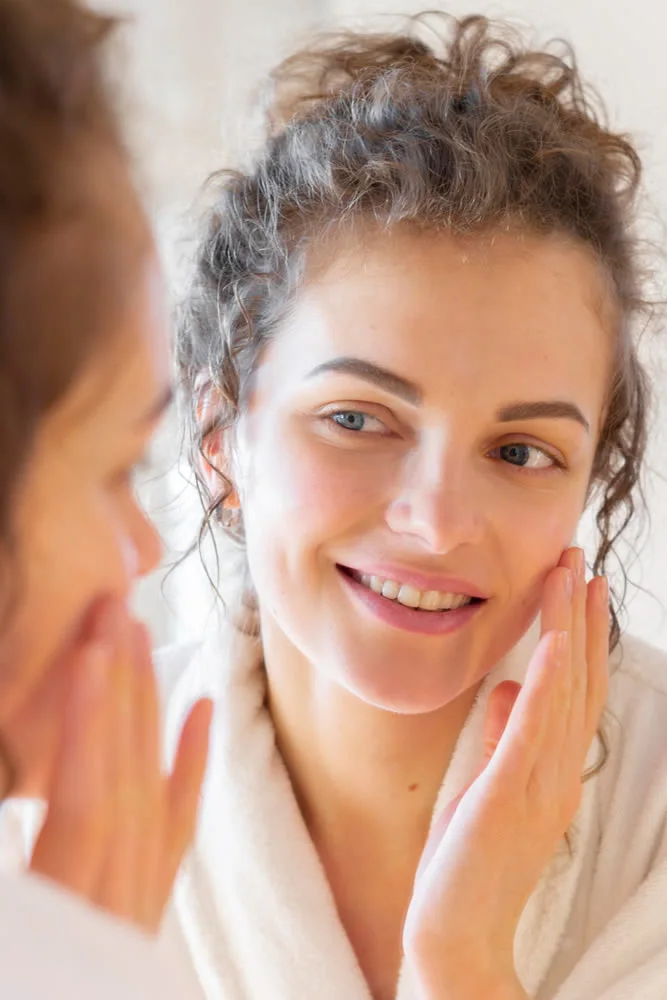What is CO2 Skin Resurfacing?
Carbon dioxide (CO2) skin resurfacing is a modern skin treatment technique. Using precise carbon dioxide lasers, it gently removes thin skin layers with minimal heat damage. It’s effective for treating wrinkles, sun damage, scars, warts, specific birthmarks, and enlarged oil glands on the nose. While CO2 lasers have long been used for various skin conditions, the latest versions employ ultrapulsed or continuous light in a scanning pattern, enhancing precision and results.

How does CO2 Skin Resurfacing work?
As the skin ages, it thins, becomes drier, and shows signs like wrinkles and sagging. This is due to the decline in collagen, a protein constituting about 80% of our skin. Factors like sun exposure and pollution accelerate its degradation, leading to reduced skin elasticity and the emergence of brown spots. CO2 fractional laser therapy aims to counteract this aging process. It employs laser resurfacing, directing small beams of light energy to create microscopic holes in the skin.
This process invigorates collagen production, thereby filling in wrinkles and refining skin texture. Unlike traditional methods, CO2 fractional laser therapy ensures no damage to the skin’s top layer. Consequently, patients get optimal results with minimal bruising and reduced recovery time.
Benefits of CO2 Skin Resurfacing
CO2 Skin Resurfacing offers a multitude of advantages for skin rejuvenation. It excels in addressing:
- Fine Lines: Specifically those appearing on the face.
- Wrinkles: Diminishing their prominence.
- Aging or Sun-Damaged Skin: Revitalizing and restoring its youthful texture.
- Skin Discoloration: Evening out skin tone and reducing pigmentation.
- Birthmarks: Lightening or removing them.
- Warts: Aiding in their removal.
- Liver Spots: Diminishing their appearance.
- Enlarged Oil Glands: Reducing their size and prominence.
What to expect during CO2 Skin Resurfacing treatment?
Carbon dioxide laser resurfacing is typically an outpatient procedure. It often combines local anesthesia with sedatives, either oral or intravenous. If treating specific areas like around the eyes, mouth, or forehead, local anesthesia suffices. However, for a full-face treatment, general anesthesia might be necessary.
A partial-face treatment usually lasts 30 to 45 minutes, while a full-face procedure takes between 1.5 to 2 hours.
Typically, healing takes 10 to 21 days, with the duration varying based on the treated condition and laser intensity. The more intense the settings, the lengthier the recovery.
Once healed, oil-free makeup can help conceal the usual pink-to-red post-resurfacing hue. Green-based makeup works especially well against the redness. This redness usually fades within 2 to 3 months, but for blondes and redheads, it might persist for up to 6 months.
Darker-skinned individuals might face increased risks of hyperpigmentation post-treatment. Pre-treatment bleaching agents can help reduce this risk and are beneficial even post-healing.
Post procedure care after CO2 Skin Resurfacing?
Post-procedure skin care is crucial for optimal healing and results after carbon dioxide laser resurfacing. Here’s a guide to help you care for your treated skin:
- Sunscreen: After your skin heals, daily sunscreen application is imperative. Opt for a broad-spectrum sunscreen that shields against both ultraviolet B (UVB) and ultraviolet A (UVA) rays. Choose a facial sunscreen with an SPF of at least 30 to ensure your newly resurfaced skin is well-protected.
- Moisturizing: Once the healing phase is over, regularly apply a moisturizer to keep the skin hydrated and promote its health.
- Skin Products: If you’ve been using Retin-A or glycolic acid products, it’s recommended to halt their application post-treatment. Typically, you can reintroduce them about six weeks after the procedure, but always follow the advice of the dermatologist.

FAQ About CO2 Skin Resurfacing
Who is an ideal candidate for CO2 Skin Resurfacing?
The best candidates are individuals with fair skin, experiencing moderate sun damage, facial wrinkles, or irregular skin texture. However, a consultation is essential to determine individual suitability.
Is the CO2 Skin Resurfacing procedure painful?
While discomfort varies from person to person, local anesthesia and sedatives are generally used to minimize pain during the procedure.
Are there any potential side effects?
Common side effects include redness, swelling, and a burning sensation. These typically subside within a few days to weeks. Rare side effects might include scarring, infection, or pigment changes.
Will my daily routine be affected post-treatment?
It’s recommended to avoid strenuous activities and direct sun exposure for a few weeks after the procedure. However, normal daily routines can typically be resumed within a week or as directed by the healthcare provider.
Is there a dermatologist near me in Salt Lake City that offers CO2 Skin Resurfacing?
Yes. At our Salt Lake City dermatology office we offer CO2 Skin Resurfacing to patients from Salt Lake City and the surrounding area. Contact our office today to schedule an appointment.

